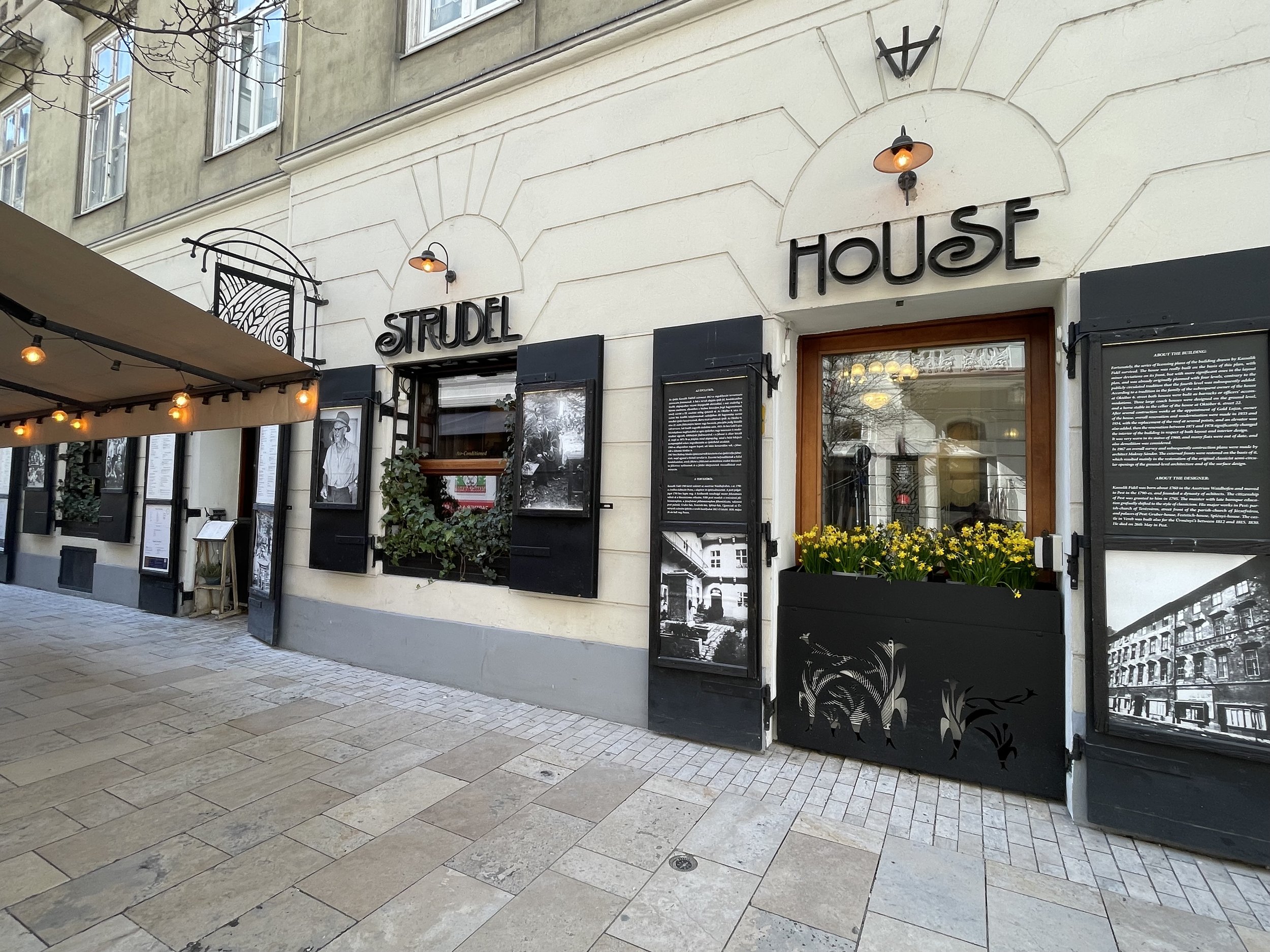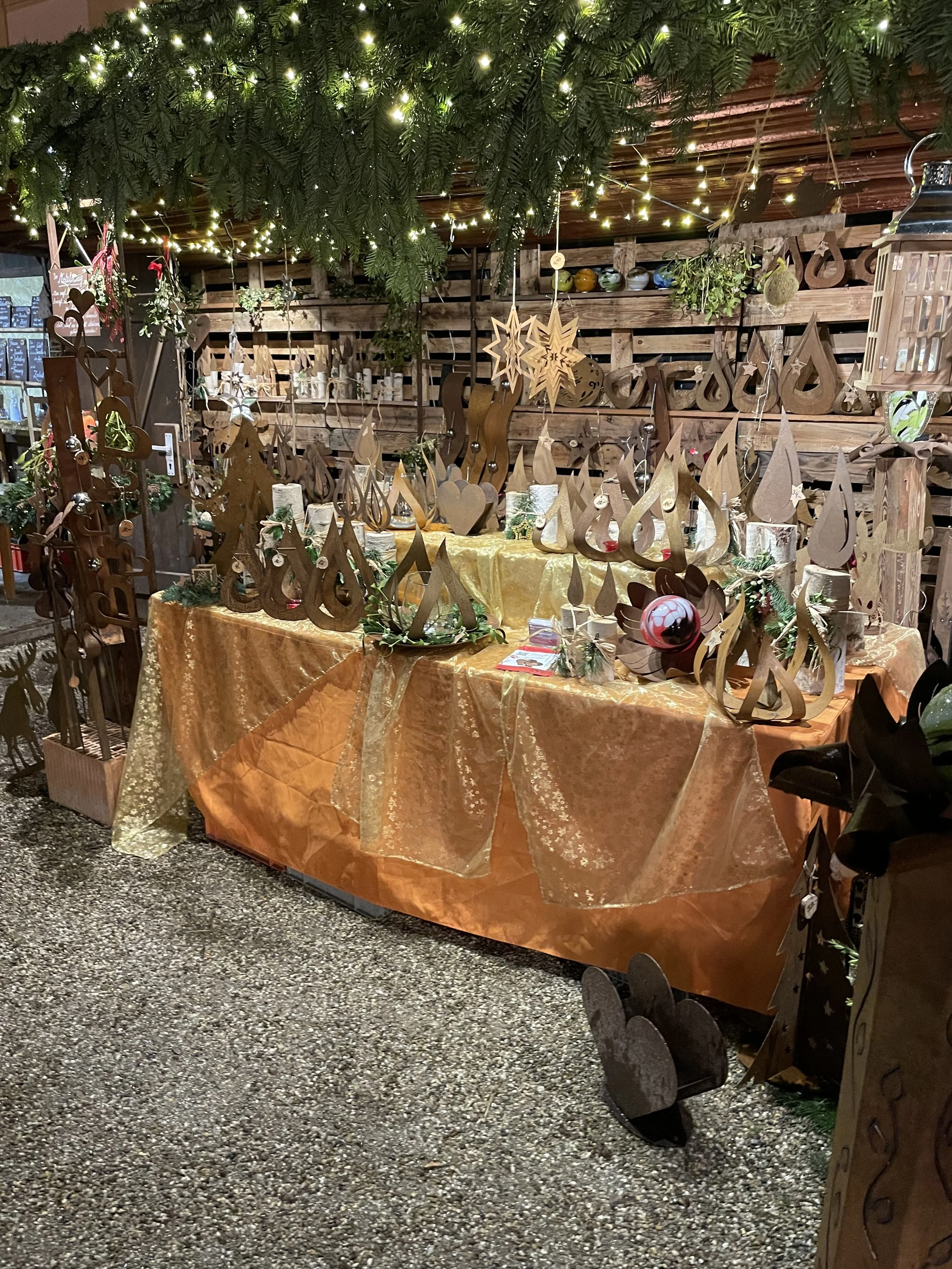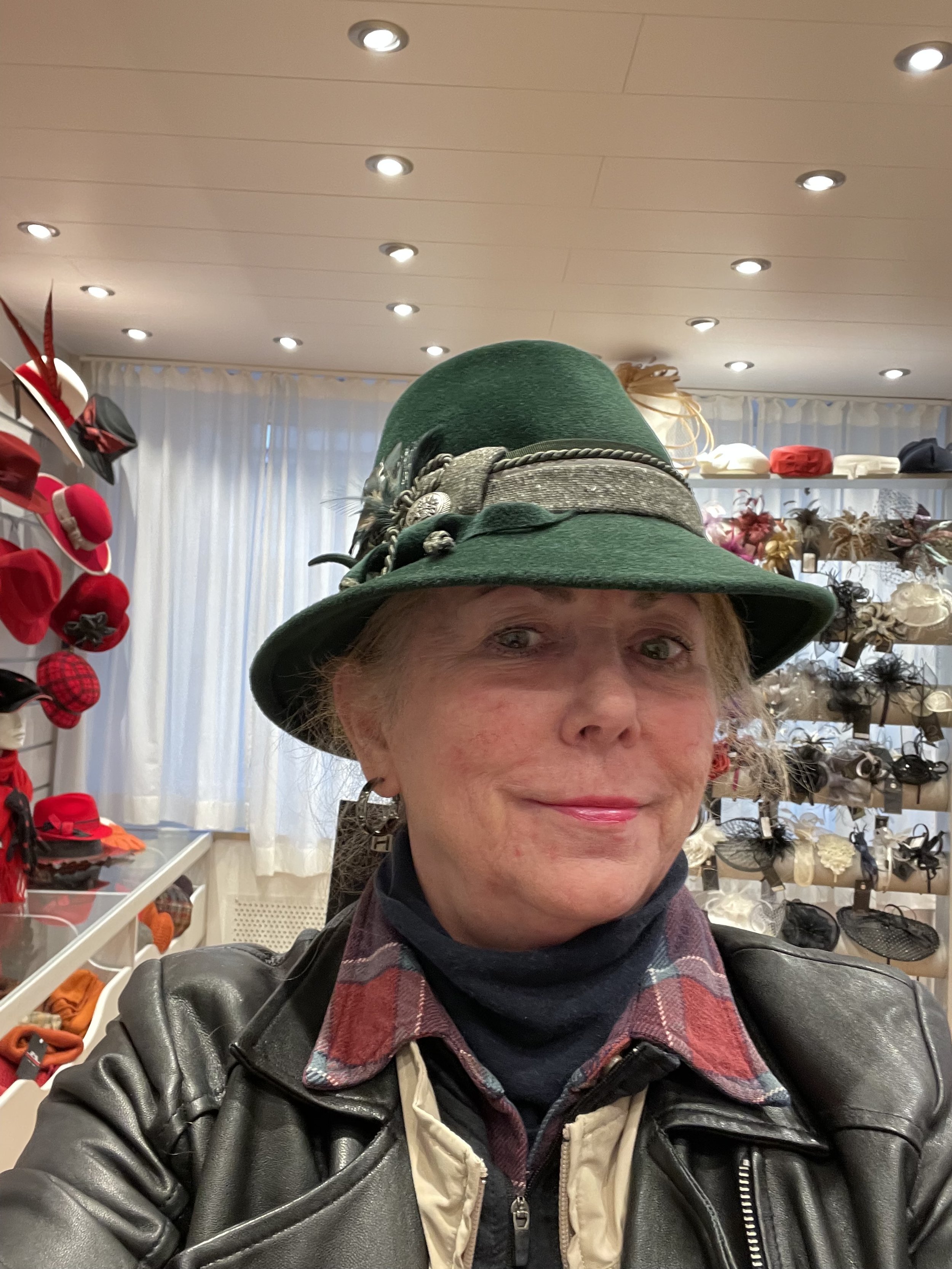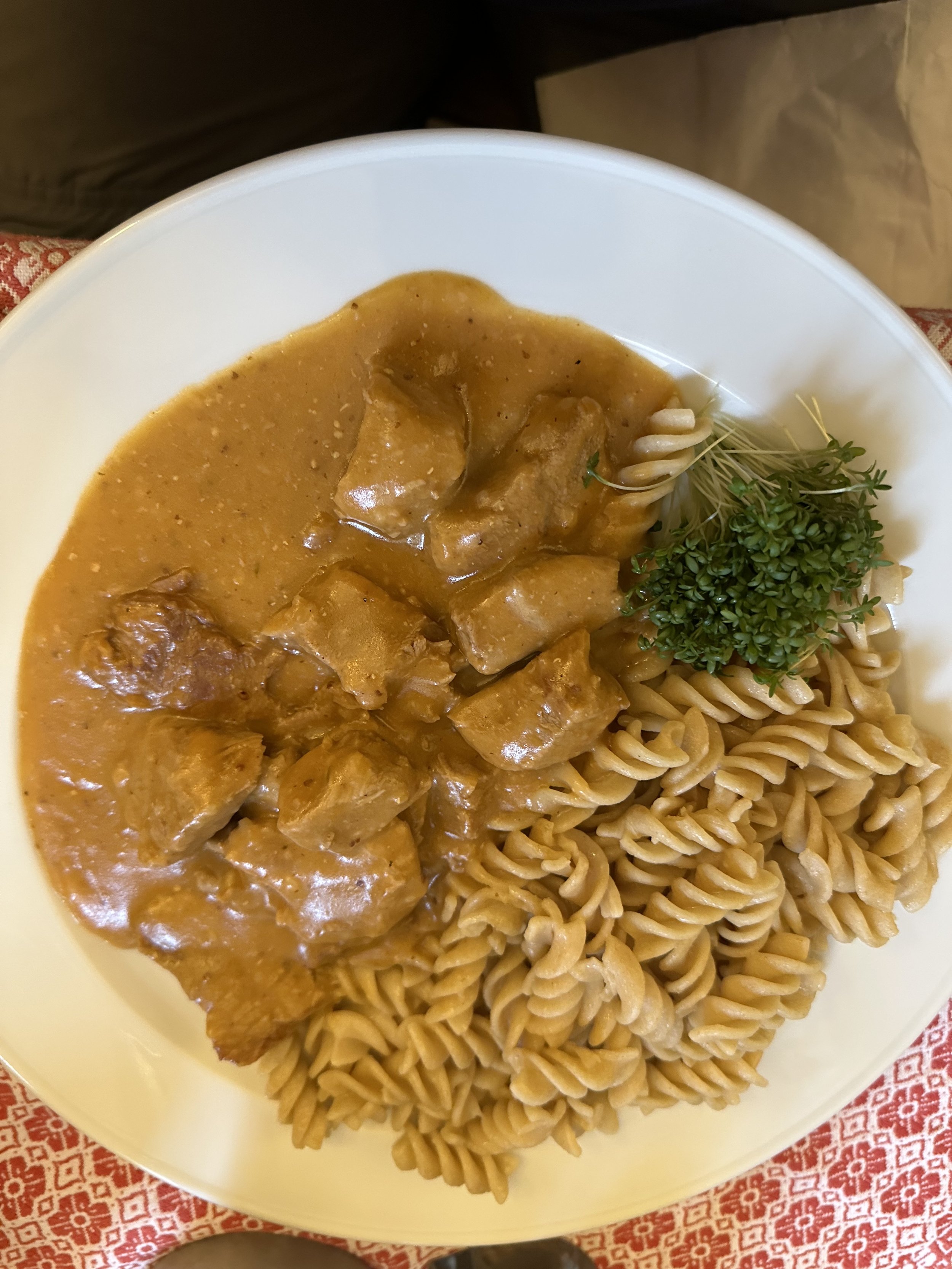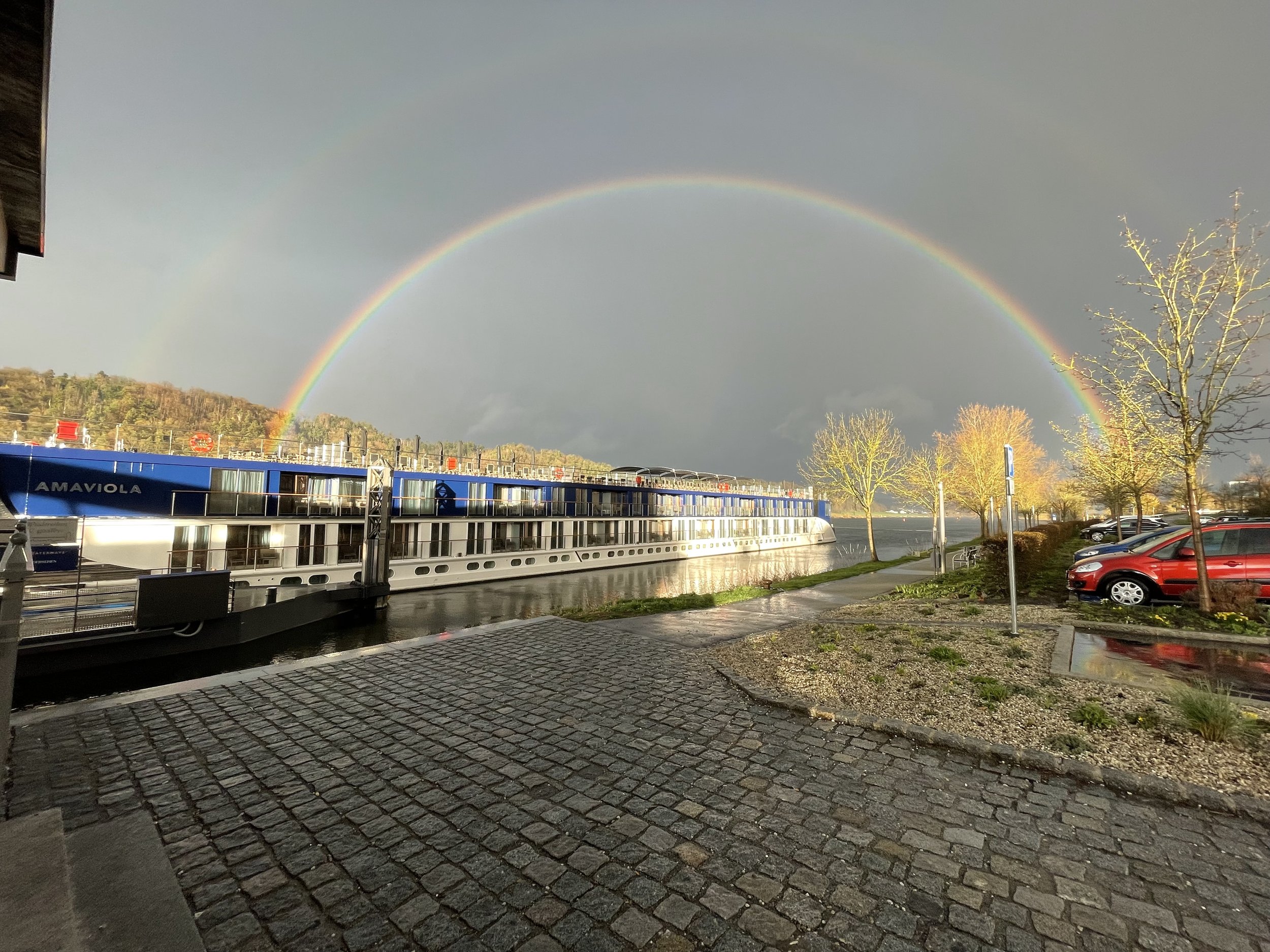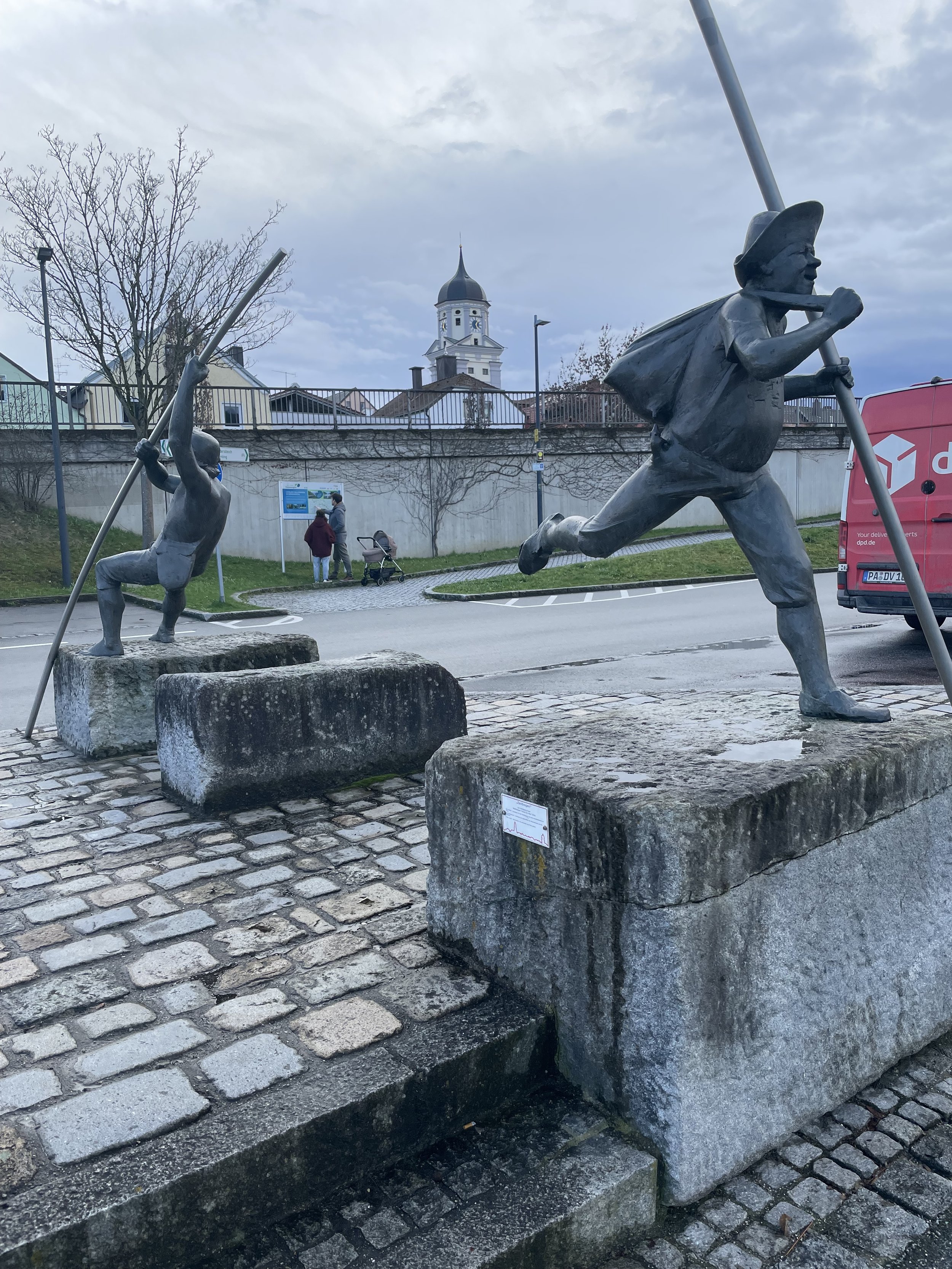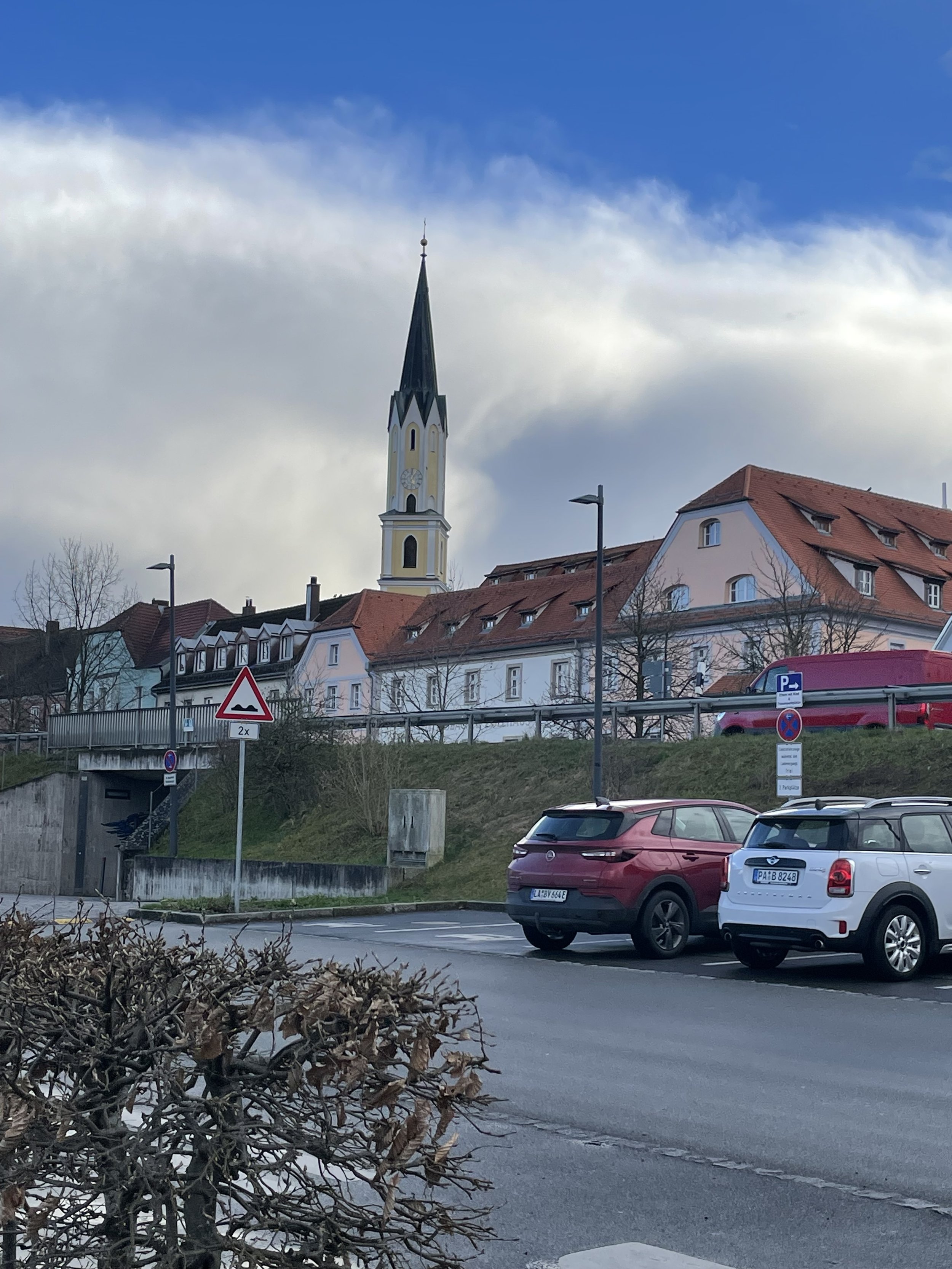Castles on the Upper Danube
Hank Schrader, USMA '71, Europe Destination & Europe River Cruise Expert
Anne Schrader, Certified Travel Counselor & Certified Luxury Cruise Specialist
If you are a long-time reader of this blog, it will come as no surprise that I like castles. On the upper Danube, from Passau to Budapest there are some interesting castles that are on or near the Danube, so I thought I’d tell you a little about the 10 that are most visible while sailing on the Danube River and show you some of our pictures.
Burg Oberhaus
Overlooking the town of three rivers (Danube, Inn and Itz) Passau, this strong fortress guards one bank of this river town. It was designed to protect the Bishop of Passau. The numbers on the castle are 1299 not 1999. At one time Passau was famous for sword making and considered as good as Toledo (Spain) and Damascus (Syria).
Today it is a museum and restaurant.
Burg Oberhaus
Burg Oberhaus Complex
Krampelstein Castle (KM 2215)
This castle dates to 1171 and is privately owned today. The tower and residence were surrounded by a wall that only partially remains. Anne took this picture in 2015 and the mist makes it look spooky.
Krampelstein Castle
Linz Castle
Linz Castle has only part of the walls remaining today as the original castle was destroyed. It was built between 1364 and 1388 by Heinrich von Virneburg, who was the archbishop of Cologne to collect tolls. It was badly damaged during the Neuss War in 1475 (a war between several religious leaders trying to gain more territory under their control). It now is a museum and restaurant.
Linz Castle
Linz Castle Ruins
Schonbuhel Castle (KM 2032)
Known as the “watchman of the Wachau”(the part of the Danube River between Melk and Krems), it is built on the right bank of the Danube 40 meters above the river. It was built in the 12 century as a defensive fortress. In the 1600s it became an abbey.
Schonbuhel Castle
Aggstein Castle (KM 2025)
The original castle was the fort of the Kuenrings but fell in disrepair after 1358.
By 1429 the castle was rebuilt. This was the start of the most infamous robber-baron’s fortress on the Danube. They used iron chains stretched over the river and the wonderful views of the river from the castle prevented merchants and others to escape detection without paying a toll or even having all their goods plundered. The area was so bad it earned the nickname “Schrekendwald” which is translated to mean “forest of terror.” The Turks later burned down the castle in 1529.
It is now a tourist site.
Aggstein Castle
Aggstein Castle Photo Anne Schrader
Hinterhaus Castle (KM 2019)
Hinterhaus was built by the Kuenringers as a stronghold for their rule of the entire Wachau valley and overlooks the town of Spitz. The ruins can be toured today.
Hinterhaus Castle
The Fortified Church of St. Michael (KM 2017)
Although very small, it is easily visible during sailing through the Wachau. It was built to protect from the invading Turks. The roof ridge is decorated with 7 animal figures known as rabbits by the locals, but the origin of this term is unknown.
St Michael’s Fortified Church. Photo Anne Schrader
St Michael’s Fortified Church.2012
Kuenringberg Fortress (Durnstein Castle) KM 2009
This castle ruins are famous for holding in captivity Richard the Lionheart in 1193.
This is the story of his capture and release. During the Third Crusade, he offended the Babenberg Duke Leopold V by tearing down the flag of Austria from the walls of Acre, a Christian stronghold in the Holy Land. On his way back to England, as he tried to travel in Austria, he was recognized and held captive.
His exact location was not known, and legend has it that his minstrel Blondel searched for him by singing Richard’s favorite songs at each castle. When Richard joined him singing, he let the English royalty know where he was held. He finally was released after the English paid a huge ransom of 23,000 kg of silver! Raising this enormous sum, fell upon all of the English subjects and some say led to the rise of the legend of Robin Hood.
In 1645, during the 30 Years War, Swedish soldiers destroyed and burned the castle, leaving it in ruins. The castle is a 20-minute hike up from Durnstein and often offered by river cruise lines as an active excursion option to see the awesome views of the Danube and parts of the Wachau Valley.
Durnstein Castle
Part of the main castle that was destroyed overlooking Durnstein
King Richard I Lionheart
King Richard’s Reign and Life
Duke Leopold V the Virtuous
Duke Leopold V Reign and Life
The small Village of Durnstein
Bratislava Castle Fortress
The massive Bratislava Castle, is located on a hill that has been populated as early as in the Stone Age. The Celts built a fortified stronghold here in the 1st century BC. The Romans, the Germans, the Slavs, the Hungarians and the Austrians have ruled the area in the later centuries. Bratislava Castle became the residence of the Hungarian Kings and was repeatedly rebuilt in various styles. Today it houses the exhibition of the Slovak National Museum and serves as a state function venue.
The castle dates back to 907, but the stone fortress was completed in 1437. It was rebuilt in the Renaissance style and later in the baroque style. During the reign of Maria Theresa, she had her son-in-law live in the castle as he served as governor of the region.
In 1811 the fortress was destroyed by fire and not rebuilt until 1953.
The grounds also have an excellent Baroque Gardens. Often river cruise companies offer this as an excursion and an active hike up the hill to the grounds.
Bratislava Castle
Bratislava Castle at Night
Maria Theresa Statue in Bratislava
Buda Castle and Fisherman’s Bastion
The castle district of Buda includes the castle, Fisherman’s Bastion and the Matthias Church.
Bada castle was completely destroyed during WW II. It has been fully restored and houses 2 very good museums today. The Budapest History Museum tells the story of the city from the Bronze Age to present. The Hungarian National Museum has art displays from the Middle Ages to present.
Buda Castle
Fisherman’s Bastion is built on the old medieval fish market area. Its name comes from the mission of the fisherman to defend this area in times of conflict. The cobblestone streets of the Fisherman's Bastion is on the Buda side of Budapest. The series of seven neo-Gothic towers represent the 7 Hungarian tribes and their chieftains who founded Hungary in 895. The south part of the bastion, facing the Danube river is about 140 meters. They provide a breathtaking panorama of the Danube River, the Parliament building and the Pest side of Budapest.
Fisherman’s Bastion The Statue is Stephen I of Hungary
Another view of the Fisherman’s Bastion showing the defensive positions. This is part of the 140 meter long structure that runs parallel to the Danube River.
Budapest parliament in the fog as seen from Fisherman’s Bastion
Budapest Parliament at night
Matthias Church
This church was the coronation church for kings of the Hungarian kingdom.
Matthias Church
Matthias Tiled Roof
Our Final Thoughts
Castles were built to defend territory. With the advancement of modern weapons, especially cannons, they became relics of the past. They also cofirms the constant struggles of power, greed and religion that faced Europe. Sometimes, it is plain cool to see sites that are interesting to you and learn a little about the turbulent history of the era. Try and imagine what it was like during those times and realize castles while impressive looking, were really not very comfortable and often dark and damp for the inhabitants living there. Protection outwayed comfort and are not as romantic as we might think
We are travel experts, ocean and river cruise specialists, and Europe destination experts. We have first-hand knowledge of almost anywhere you want to visit in Europe. We know our products and the vendors who sell them to you. We have designed special tours for dozens of clients, led several and will continue to find just the right vacation that will exceed your expectations.
When you are spending your hard-earned money for a vacation, you want an advisor who can match you with the right trip. You want someone who will understand your expectations and fuel your anticipation (or excitement) to get you the best possible trip experience. And, you want someone who can help you with the decision making process. We think we have all these qualities.
Whatever your Dream Destinations are, we are here to help you get the best possible vacation based on what is important to you! We will provide you high quality, expertly planned travel. Please give me a call 713-397-0188 (Hank) or email me at hschrader@visitdd.com . We want to help you: Savor life…make memories…Visit Dream Destinations! Your journey begins here!
ANNE has earned a degree from the University of Houston in Hotel and Restaurant Management. Serving as the President of Visit Dream Destinations, LLC, since 2016, she is uniquely experienced professional travel advisor with over 26 years’ experience in the travel industry. Among her numerous certifications, she is a Certified Travel Counselor (CTC) by the Travel Institute, considered the gold standard in travel agent certification and she is also an Accredited Cruise Counselor (ACC) by the Cruise Lines International Association (CLIA), as well Luxury Cruise Specialist also from CLIA. Having traveled often to Europe since 1989, she has expanded on her certification as a Destination Specialist in Western Europe (DS) with extensive first-hand experience in luxury vacations. She holds numerous other specialty designations from individual vendors. An expert photographer, she delights in capturing the true essence of destinations to share with all.
HANK is a certified Western European Destination Specialist (DS) who has been traveling to Europe for 52 years. He is also an Accredited Cruise Counselor (ACC), conferred by the Cruise Line International Association (CLIA). This recognized expert in cruise and leisure travel is a retired Army Officer, and taught World Geography for 8 years. He is a `71 graduate of West Point and has earned 2 master’s degrees. His other Certifications:
AmaWaterways River Cruise Specialist
Viking River Cruise Specialist
Scenic River Cruise Specialist
Emerald Waterways Specialist
Avalon Waterways Specialist
Brit Agent
















































































